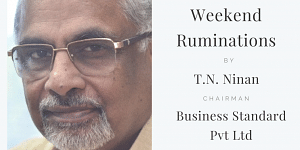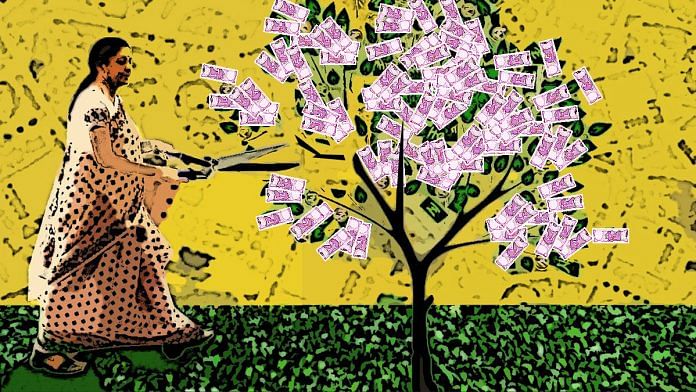All previous announcements having failed to do the trick, Union Finance Minister Nirmala Sitharaman has thrown the kitchen sink at the problem of slack economic growth — officially recorded for the last economic quarter at 5 per cent, and expected by many observers to be even lower in the current quarter. In slashing the corporation tax rate to the long-promised 25 per cent, the finance minister has delivered what her predecessor promised five years ago, and which a draft direct tax code had proposed even earlier. She has thus brought the corporation tax rate closer to the levels in other countries in the region. The step recommends itself further in that it is better to put money in the hands of private players than for the government to be increasing its own spending.
 The clever part of the announcement is a concessional 15 per cent tax rate for fresh investment. This mirrors what Thailand announced last week: A 50 per cent cut (to 10 per cent) in corporation taxes for factories that re-locate from China. Vietnam too offers a 10 per cent rate for targeted firms. Clearly, the concessional rate is designed to see if India can gain from the US-China trade war and, at the same time, give a boost to the stalled ‘Make in India’ programme.
The clever part of the announcement is a concessional 15 per cent tax rate for fresh investment. This mirrors what Thailand announced last week: A 50 per cent cut (to 10 per cent) in corporation taxes for factories that re-locate from China. Vietnam too offers a 10 per cent rate for targeted firms. Clearly, the concessional rate is designed to see if India can gain from the US-China trade war and, at the same time, give a boost to the stalled ‘Make in India’ programme.
Will it work? The jury must be out, because the consensus has been that what ails the economy is lack of demand. Boosting post-tax corporate profits attacks this issue only tangentially. For demand to get a boost, companies need to distribute larger dividend payouts and invest in new capacity, which they would not have done otherwise (this would increase the demand for capital goods, which have seen a decline in production). The problem of weak rural demand is not addressed, nor does the new announcement help companies that have slipped into the red because of slack demand or declining exports.
Also read: Modi govt is countering the slow economic tempo with counter-narrative of being responsive
The tax cut is not the only thing announced. There is also a return to the bad old habit of ‘loan melas‘, and a fresh diktat to government-owned banks. This time, it is a command that no loans to small and medium enterprises should be declared non-performing till the end of the financial year. When will things change?
The ‘kitchen sink’ is of course fiscal restraint, which has been kissed goodbye. Already, tax revenue has been running well short of targets. Along with the undeclared part of the deficit (hidden in various public sector companies’ books, or piling up as the government’s unpaid bills), the deficit this year could well be the highest in a decade — after 6.4 per cent was logged in the global crisis year of 2009-10. Bear in mind that, just a day before the finance minister’s press conference, the governor of the Reserve Bank of India (RBI) had declared that there was “little space” for a fiscal stimulus — a view echoed strongly by one of his predecessors.
In announcing just such a stimulus, which translates into a larger government borrowing programme, the finance minister has changed the dynamics of the debt market and made problematic a widely expected interest rate cut by the RBI next month. Alternatively, any policy rate cut announced will not find full reflection in a constrained money market. So, while the equity market celebrates, the debt market has been left with a problem. In economics, there is no free lunch.
The tax cut has been done in a manner that hurts states disproportionately, because the cut is in the rate of basic tax (revenue from which is shared with states), not in the surcharge that the Centre keeps for itself. The states now have one more complaint against a central government that had once promised cooperative federalism, because New Delhi recently re-framed the terms of the Finance Commission to pre-empt a part of central revenue before it is shared with states. Further, adopting an aggressive stance, it has proposed to the commission that the states’ share of central taxes should be slashed sharply from present levels. No government in New Delhi has ever done this, and Centre-state fiscal relations are therefore fraught. But why worry when companies and investors are happy?
By Special Arrangement with Business Standard
Also read: The economy is India’s most potent weapon, but it’s losing its power




Agreed rural demand can see a marginal uplift as usual after harvests. Uncertainty amongst govt employed due to privatization corporstization drive of performing Govt Enterprises ( crown jewels of economy) contributing to the low demand . Notable railway manufacturing units , SAIL , Coal India are …Vandemataram
BJP is using government to benefit its benefactors. If more money in people hands was the goal, what prevented the government for slashing income tax rates.
Why should the fiscal deficit – both the disclosed and the actual figure – be so high ? We have not fought a war. Oil has not spiked to $ 200 a barrel. The world – barring the recent trade war – has not faced a major economic crisis. The government has been eating everyone’s lunch. For that limited reason itself one would applaud the tax cut for firms that are still making profits. 2. On the economy, the government is all at sea. If there are some smart people around, no one is listening to them.
One more smoke-and-mirror act! How on earth this purported largess to the corporate sector going to stimulate demand at the grassroots level? Furthermore, most corporate don’t even pay 25% tax after claiming incentives & compensations, so why would they switch to the new tax proposal? The tax incentives to new manufacturing companies is perhaps laudable but that will come to fruition in the long term, at best in the medium term, and certainly not in the short term to generate employment. The rural distress is genuine and acute but the government has no money to address that having blown it up in headline grabbing schemes which has yielded very little other than creating an illusion of development.
We are expecting a 50 year old disease to get cured in 5 years. The real reason in lower demand is – discretionary spending, which was mostly funded by unaccounted income, is greatly reduced. The parallel economy is shrinking and no body spends white money in casino like expenses.
One must commend the genuises on the faculty of WhatsApp University who keep coming up with these bright explanations for what is clearly a very dark situation. Fifty years also has a nice Congres / Nehru Gandhi subtext to it.
Are you part of it or a member of Italian mafia family who destroyed this country for last 50 yrs.
They are already spending on railways and highways, but it hasn’t done much to shore up demand. They have tried PM Kisan thing but that hasn’t done the trick either. The simple fact is agriculture is not going to turn around so easily, no one will amend land laws or completely free up exports as the risks both political and economic are too high. My guess is they realized that they can’t do much about rural demand in the short or possibly even the medium run so let the industry deal with it the way they choose. In my opinion this was probably the least worst among all the bad options.